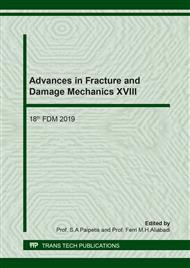p.92
p.98
p.104
p.110
p.116
p.122
p.128
p.134
p.141
Optimization Methodology for Continuous Heterogeneous Structures: A Preliminary Design of an Engine Mounting Bracket
Abstract:
A numerical methodology is presented which is based on Topology Optimization (TO) approach for designing continuous heterogeneous structures. This method is then exploited to reduce weight and to increase stiffness in mechanical components. Useful guidelines for the evaluation of equivalent material properties of metallic cellular structures are discussed, and they are applied for the optimization process of an engine mounting bracket under realistic loading and boundary conditions. The outcome of TO, which is related to the material density distribution into the design space, is critically reviewed for the definition of bulk, lattice and void regions within the component.
Info:
Periodical:
Pages:
116-121
Citation:
Online since:
December 2019
Authors:
Price:
Сopyright:
© 2020 Trans Tech Publications Ltd. All Rights Reserved
Share:
Citation:


